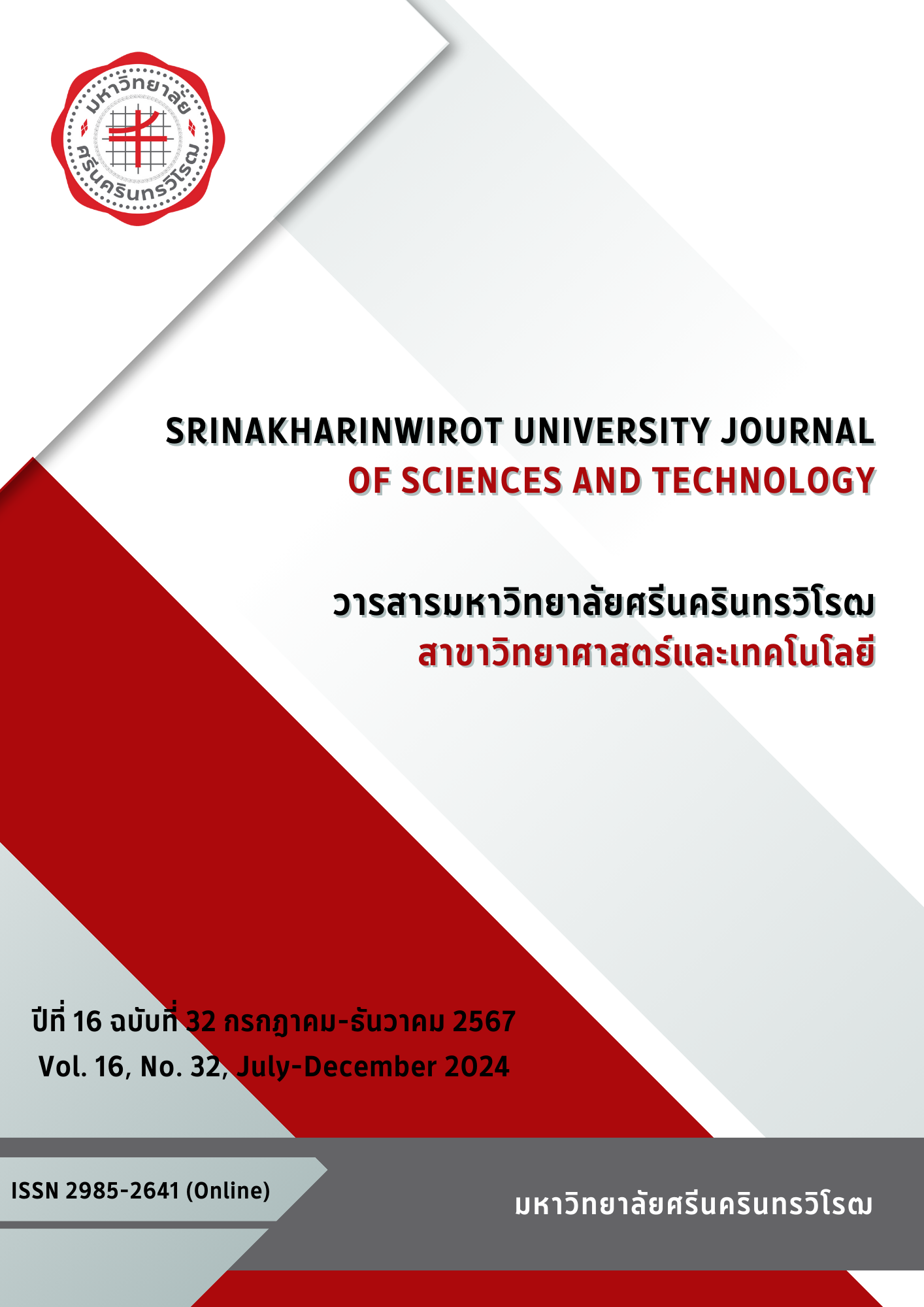DETERMINATION OF PESTICIDE RESIDUES IN CITRUS RETICULATA USING GC-MS/MS WITH ETHYL ACETATE EXTRACTION
Keywords:
Citrus Reticulata, Pesticide Residues, Ethyl Acetate, GC-MS/MSAbstract
A simple, fast, inexpensive, and sensitive method, namely ethyl acetate extraction was developed for analysis of pesticide residues in Citrus Reticulata. The optimum conditions for extraction of pesticide residues were orange sample (g): sodium hydrogen carbonate (g): sodium sulphate (g): ethyl acetate (ml) in the ratio of 10:3: 10:20. Eleven types of pesticide residues in Citrus Reticulata were analyzed by using gas chromatography tandem mass spectrometry (GC-MS/MS). The linear calibration curve was in the range of 0.005 - 1.000 mg/kg-1 with a correlation coefficient (R2) higher than 0.9950. The percentage recovery and relative standard deviations (%RSD) were in the range of 68.38 – 108.16 and 2.51 – 19.19, respectively. The limit of detection of the method was 0.50 µg/kg-1 and limit of quantification was 1.70 µg/kg-1. From the analysis of 50 citrus samples, it was found that there were pesticide residues in 43 samples, and the amount exceeded the Agricultural Product Certification Standards in 5 samples. The ethyl acetate extraction followed by GC-MS/MS determination were suitable method for the analysis of pesticide residues in Citrus Reticulata samples.
Downloads
References
Gupta, R. C., and Milatovic, D. (2012). Chapter 4 Toxicity of organophosphates and carbamates. In T. C. Marrs (Ed.), Mammalian Toxicology of Insecticides (pp. 104-126). rsc publishing.
Souza Caldas, S., Marian Bolzan, C., Jaime De Menezes, E., Laura Venquiaruti Escarrone, A., De Martinez Gaspar Martins, C., Bianchini, A., and Gilberto Primel, E. (2013). A vortex-assisted MSPD method for the extraction of pesticide residues from fish liver and crab hepatopancreas with determination by GC–MS. Talanta, 112, 63-68.
Brugnerotto, P., Costa, A. C. O., Fuente-Ballesteros, A., Ares, A. M., Gonzaga, L. V., Fett, R., and Bernal, J. (2023). Determination of seven pesticide residues in Mimosa scabrella honeydew honey from Brazil by GC-MS. Journal of Food Composition and Analysis, 122, Article number 105433.
Girame, R., Shabeer, T. A., Ghosh, B., Hingmire, S., Natarajan, R., and Dubey, P. N. (2022). Multi-residue method validation and safety evaluation of pesticide residues in seed spices cumin (Cuminum cyminum) and coriander (Coriandrum sativum) by gas chromatography tandem mass spectrometry (GC–MS/MS). Food Chemistry, 374, Article number 131782.
Abo-Gaida, A.-A. H., Shendy, A. H., Taha, S. M., Mahmoud, H. A., Attallah, E. R., and Fernandez-Alba, A. R. (2022). Fennel‐seeds extract as an analyte protectant for the GC‐MS/MS residue analysis of 182 pesticide in strawberries: Comparing the manual mixing and sandwich injection. Journal of Chromatography Open, 2, Article number 100056.
Issa, M. M., Taha, S. M., El-Marsafy, A. M., Khalil, M. M., and Ismail, E. H. (2020). Acetonitrile-Ethyl acetate based method for the residue analysis of 373 pesticides in beeswax using LC-MS/MS and GC–MS/MS. Journal of Chromatography B: Analytical Technologies in the Biomedical and Life Sciences, 1145, Article number 122106.
Shin, J. M., Choi, S.-J., Park, Y. H., Kwak, B., Moon, S. H., Yoon, Y. T., Jo, S. A., Yi, H., Kim, S. J., Park, S. K., and Park, J. S. (2022). Comparison of QuEChERS and Liquid–Liquid extraction methods for the simultaneous analysis of pesticide residues using LC-MS/MS. Food Control, 141, Article number 109202.
De Mastro, F., Cocozza, C., Traversa, A., Cacace, C., Mottola, F., Mezzina, A., and Brunetti, G. (2022). Validation of a modified QuEChERS method for the extraction of multiple classes of pharmaceuticals from soils. Chemical and Biological Technologies in Agriculture, 9(1), Article number 49.
Sarraf, M., Beig-babaei, A., and Naji-Tabasi, S. (2020). Application of QuEChERS method for extraction of functional compounds. SN Applied Sciences, 2(11), Article number 1858.
Fernández-Alba, A. R. (2013). EURL-PROFICIENCY TEST-FV-15: Generalitat Valenciana and Universidad de Almería. n.p.
International, A. (1993). AOAC Peer-verified methods program: Manual on policies and procedures. Association of Official Analytical Chemists.
FAO, and WHO. (2019). Codex 2019: The year of food safety. Rome. Licence: CC BY-NC-SA 3.0 IGO.
Liu, W., and Gan, J. J. (2004). Separation and analysis of diastereomers and enantiomers of cypermethrin and cyfluthrin by gas chromatography. Journal of agricultural and food chemistry, 52(4), 755-761.
Li, Z., Zhang, Z., Zhang, L., and Leng, L. (2008). Stereo and enantioselective degradation of β-cypermethrin and β-cyfluthrin in soil. Bulletin of environmental contamination and toxicology, 80, 335-339.
Downloads
Published
How to Cite
Issue
Section
License
Copyright (c) 2024 Srinakharinwirot University Journal of Sciences and Technology

This work is licensed under a Creative Commons Attribution-NonCommercial-NoDerivatives 4.0 International License.
Srinakharinwirot University Journal of Sciences and Technology is licensed Under a Creative Commons Attribution-NonCommercial-NoDerivs 4.0 International (CC-BY-NC-ND 4.0) License, Unless Otherwise Stated. Please Read Journal Policies Page for More Information on Open Access, Copyright and Permissions.



